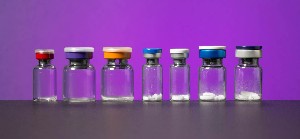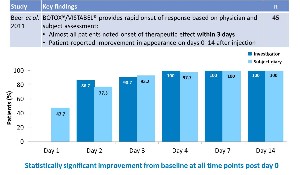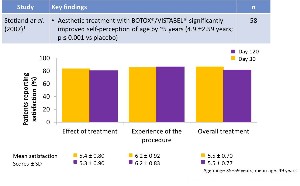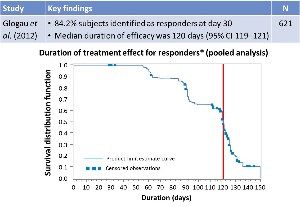What is Botox?
Botox is the trade name for onabotulinum toxin produced by Allergan, Inc. It is a highly purified, crystallized extract of the type A toxin, procedure by the bacteria Clostridium botulinum. The bacterial product undergoes multiple purification and stabilization processes, before the final product – Botox – emerges. It is interesting to note that the worldwide supply of Botox is produced in a single pharmaceutical laboratory in Westport, Ireland.
How does Botox actually work?
Botox is high purified bacterial product (see above), and it is unique in that the crystalline final product consists of homogenous protein particles. These particles (called Botox complexes) consist of several “shielding” proteins as well as the active “core” protein. The core protein is very small. Once injected, the core protein attached to the ends of motor nerves and is absorbed into the nerve ending. Here an even smaller part of the core protein (called the light chain) is released and it functions as an enzyme within the nerve cell. The enzyme activity causes a change in another protein of the nerve cell wall (called SNAP-25). Once it is altered, this protein can no longer “dock” with the nerve cell’s transmitter and consequently the nerve cell will not be able to stimulate it muscle – the clinical result of this is muscle paralysis. Check out this video which explains the process MUCH better!
What is inside a vial of Botox?
The actual crystalline contents that are just apparent on the inside of the vial consist of 50 or 100 units of the purified toxin, along with excipients for stability and longevity. The excipients inside a vial of Botox include sodium chloride (salt) and human serum albumin. Other products contain different excipients as seen below.

P.S Botox vials are the two leftmost in the above picture !!
What are “units” of Botox?
A unit (previously called a mouse unit) was previously defined as the amount of toxin that would kill 50% of Swiss-Webster laboratory mice (each weighing between 18 and 22 grams), when injected into the abdominal cavity. A unit was thus used a measure of the potency of the toxin. Presently no animals are used for this purpose. The unit strength is now calculated using physic-chemical properties in a laboratory. Each manufacturer has its own calibration standards and the “units” of one brand are not comparable to another brand.
Is Botox a poison?
The definition of a medication is “A drug or other preparation for the treatment or prevention of disease”. Botox is best described a medication – it is scheduled as such – and subject to the intense regulatory scrutiny that accompanies such scheduling. As answered above, Botox contains purified and modified bacterial toxin. The definition of a toxin is “A poison of plant or animal origin, especially one produced by or derived from microorganisms and acting as an antigen in the body.” thus, the raw materials used in Botox preparation are toxins, and thus poisons, but because of the extensive manufacturing processes the finished product is actually a medication.
If it is made from a poisonous substance, is Botox safe?
Botox has a history of human use extending more than 30 years and is considered exceptionally safe. There are now many scientific publications on the safety of Botox. Many commonly taken medications are also poisons and what determines their safety is a concept known as the Therapeutic Index (TI) (or Ratio). Quantitatively, it is the ratio given by the toxic dose divided by the usual therapeutic dose. The therapeutic index varies widely among substances, and the higher the ratio, the safer the medication is considered. The safest medications may have a TI of 1000:1. A TI of more than 50:1 is considered very safe. Drugs with a TI of 15:1 or 10:1 are still considered safe, while drugs with a TI of 2:1 or less are consider less safe. Here is a list of common medications and their TI:
- Botox TI = 80:1
- Alcohol TI = 10:1
- Paracetamol TI = 7.5:1
- Aspirin TI = 6:1
- Digoxin TI = 2:1
As you can see, Botox is at least 8 times safer than alcohol.
What are the usual doses of Botox and what is the toxic level?
The present “on label” indication (see below) for facial aesthetics is 44 Units per treatment session. Of course, more or less may be used depending on patient requirements and preferences. Up to 200 Units may be used for excessive sweating. Toxic doses are in the range of 3500 to 5000 Units.
What does “on label” and “off label use mean?
All scheduled medications are governed by strict pharmaceutical regulations, which among other things, regulates the indications for which a scheduled medication may be promoted by its manufacturer. The indications that are accepted by a regulatory authority (such as the FDA) are the result of closely monitored pharmaceutical trials, which are logistically complex, as well as time consuming and expensive. For Botox, these indications include the glabella and the crow’s feet areas. When injecting these areas, the use of the product is said to be “on label”. Although there is a wealth of clinical data supporting the use of the product in other areas for similar indications, these data are not considered by the regulatory authorities, and use of the product in these areas is considered “off label”. It should be emphasised that ”off-label” use is not in any way illegal, experimental, dangerous or contrary to good practice, it simply means that a pharmaceutical company may not promote the use of a product for these indications.
Is the effect of Botox permanent?
No. As above, once the SNAP-25 protein has been altered, it will never be able to dock. The nerve cell body (on the opposite end of the nerve) will have to produce new SNAP-25 protein. This will be transported down the nerve and will resume the function of the Botox-Altered SNAP-25. This process will take some time to be clinically evident – usually 3-6 months. This latency period is when the Botox is said to be active – but in reality, the enzyme activity of the Botox core molecule lasts only a few days. The duration of action is provided by the delay in regenerating new SNAP-25.
If someone has Botox continually over a long period is there any danger?
No. Botox causes a temporary, dose dependant and fully reversible paralysis of the injected muscles. During the time of paralysis there will be muscle atrophy, but full strength will be regained once the effects of Botox wear off. Repeated treatments before full recovery will result in sustained muscle atrophy (and this may indeed represent the desired effect). However, once such treatments are stopped, recovery of the treated muscles will occur and full strength will be regained. This was demonstrated by the results of a 9 year longitudinal study of 800 patients by Carruthers & Carruthers in 2004.
How long does it take after the treatment before you see a result?
Recent scientific data published by Beer et al. in 2011 shows that a therapeutic effect of Botox is seen in over 90% of patients by 3 days post treatment. The same study has demonstrated that the therapeutic effect is evident in 100% of patients by day 7. It is also interesting to note that this study showed 47.7% of patients had an effect within 24 hours of treatment.
How much younger can Botox make me look?
The perception of age is a complex interaction of many factors – and wrinkles make up only one aspect. Nevertheless, this issue was addressed in a scientific publication by Stotland et al, 2007 . They reported that among their patients, perception of age decreased by 5 years. My personal belief is that Botox is one of the safest, most efficacious and cost-effective anti-aging treatments available today and should be an integral part of every long term anti-aging plan.
How often should you have Botox?
Botox is best administered before complete recovery of the treated muscle. This results in progressive improvement as published by Dailey et al. in 2011, as well as by Carruthers et al. in 2004. The Carruthers study used a 120 day dosing schedule (4 months). In a separate study by Glogau et al. in 2012, 50% of the large study group still had clinical effects by 120 days, dropping to 10% by 150 days. These scientific studies indicate support for dosing schedules between 3 and 6 months, with most of the data supporting 4 months as the optimal re-treatment time. Frequent dosing was thought to increase the risk of antibody formation to Botox and subsequent resistance to its clinical effect. This occurs far less frequently than expected, and a large meta-analysis of 2240 patients done by Naumann et al. in 2010, showed that the antibody conversion rate is less than 0.2% and that none of the patients with antibodies occurred in the glabella treatment group.
How long can you expect the results of Botox treatment to last?
As described above, the scientific data published by Glogau et al., in 2012, as well as a study published by Wu et al. in 2010, indicate that 50% of patients still have clinical effects of their Botox treatment at 120 days. Extrapolation of the data in these studies indicate that complete recovery of the injected area will take 180 days.
Do you have any specific home care advice post Botox treatment?
The after-care advice varies widely between practitioners. From a biological point of view, avoiding physical pressure in the area of injection is recommended, since the Botox molecules must undergo active transport from the extra-cellular environment into the nerve cell. Before this process is complete, the Botox molecules may be moved into areas (by tissue pressure such as massage) where their effect is not intended. This may cause unwanted and adverse effects. Additionally, since the Botox molecule is actually an enzyme, heating the tissue to temperatures above physiological normal may cause the enzyme to be de-natured. I therefore advise my patients that pressure and heat in the treated area should be avoided for 6 up to 24 hours if possible.
Is it true that if you have Botox treatments then you get new lines elsewhere?
Yes, and No. If some of the muscles in a “synergistic group” have not been treated then increased neuronal input will cause these muscles to hypertrophy and may produce new lines. An example of a “synergistic group” is the frown muscles, which consists of up to 7 muscles [one procerus, 2 corrugator supercilli muscles, 2 depressor supercilli muscles and 2 orbicularis occuli muscles] – see here. If only 3 of these muscles are treated, then when a patient tries to frown, supra-normal neurological activity will occur in the non-treated muscles causing their hypertrophy, and the development of “new” wrinkles. If all the muscles in a synergistic group are expertly treated then this would not occur.
Can you have laser or radiofrequency (RF) treatments at the same time as having Botox?
No. It is not advisable to combine laser or RF treatments with Botox, because of the risk of denaturing the Botox molecule due to the heat generated by the device (see above). In addition, a more even and aesthetically better result from the laser or RF treatment may occurs when the wrinkles are relaxed and the skin smoothed. Thus, most practitioners recommend treatment with Botox first and the laser or RF device after 2 weeks.
Got a Question I didn’t answer?
Email me and I’ll post it!



